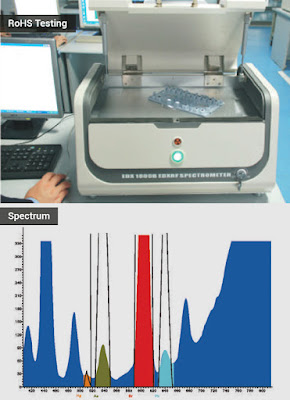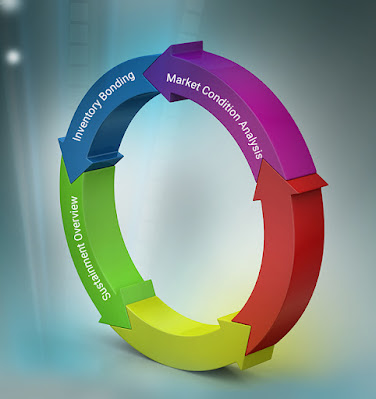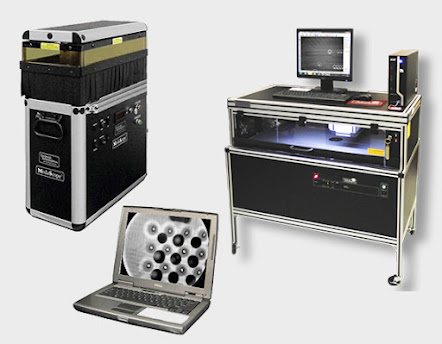Electronic components demand has been at the peak ever since the pandemic. However, with a lack of supply, many suppliers struggled to maint...
How does RoHS compliance testing help in the authentication of electronic components?

January 2022
Electronic components demand has been at the peak ever since the pandemic. However, with a lack of supply, many suppliers struggled to maintain proactive supplier lifecycle management for timely sourcing of authentic electronic components. However, these are not the only challenges industrial buyers had to face. In addition to finding legitimate suppliers, buyers also needed to comply with numerous industry standards such as XRF, RoHS Testing compliance, X-Ray testing, and more.
What is RoHS?
Restriction of Hazardous Substances (RoHS) is among the most widely used standard procedure. The RoHS directive came into existence to detect, restrict and minimize toxic waste that negatively impacts the environment. It is a directive used for limiting the hazardous chemicals and materials (such as lead, mercury, cadmium, chromium, bromine, etc.) used in the production or distribution of electrical and electronic component equipment. In addition, it helps authenticate that the electronic and electrical components adhere to the industry guidelines. Therefore, RoHS compliance is mandatory, especially for supplying, distributing, and selling electronics instruments or electronic parts in the European market.
The RoHS compliance testing involves the following testing methods:
- X-Ray Fluorescence (XRF) Spectroscopy
XRF RoHS Testing is usually used as pre-screening testing for electronics that are suspected to be at risk of containing hazardous substances. Specialized X-Ray inspection equipment is used for the XRF Spectroscopy testing. It is a non-destructive technique that involves the analysis of particular parts of the electronic components. It helps identify the hazardous substances used in manufacturing the electronic parts and ensure that it does not exceed the specified safe limit of usage allowed for that specific component.
- Fourier Transform Infra-Red (FTIR) Spectroscopy
Fourier Transform Infra-Red Spectroscopy or FTIR Analysis is an advanced testing method performed using infrared. It is a highly effective technique that helps identify the various compounds and materials used for manufacturing electronic devices. It analyzes the substances used in electronic devices to determine their absorption, emission, and photoconductivity.
- Scanning Electron Microscope (SEM)
Scanning Electron Microscope (SEM) is a critical method widely used for RoHS process control. It involves producing and analyzing detailed images of the cell structure of the substances used in manufacturing the particular electronic parts. It is performed using a highly focused high-energy beam of electrons to scan the electronic components.
It can be challenging to
employ an in-house testing facility and find a qualified team for conducting
RoHS testing. Thus, you may find it more beneficial to rely on third-party
credible testing partners with fully-equipped testing facilities to perform the
required testings. So, if you need third-party support from a reliable team of
certified inspectors for XRF RoHS compliance testing, proactive supplier
lifecycle management, and integrated supply chain solutions, get in
touch with our team for expert assistance. Contact us today to learn more!
PCB (Printed Circuit Boards) are being widely used in almost every piece of electronic equipment. So naturally, effective quality control is...
What are the various quality control methods used for sourcing PCBs?

January 2022
PCB (Printed Circuit Boards) are being widely used in almost every piece of electronic equipment. So naturally, effective quality control is essential when sourcing PCBs as the quality of materials used for PCBs determines the high performance of the electronic device. During the manufacturing process of PCBs, X-ray inspection and many other quality control testings are done to ensure quality at each stage. But they usually have to pass several additional quality checks before being sold as buyers must ensure that the PCB development follows the relevant industry standards when sourcing PCBs for manufacturing electronics.
Following are the standard quality control methods used for PCBs:
Manual inspection
The first phase is usually a non-invasive manual inspection by certified inspectors. The inspector will ensure that the component has no visible defects. They usually use a number of tools to ensure the product is manufactured adhering to the relevant design standards. In addition, they will refer to the design of the original product to ensure the design of the delivered PCBs is consistent.
Automated Optical Inspection (AOI)
Automated visual inspection or Automated Optical Inspection (AOI) of the printed circuit board (PCB) is considered a superior and more reliable method of inspection than manual inspection. It is conducted using advanced technology machines to scan the PCB and detect any quality defects such as inconsistency of fillet size, shape, component line width violations, etc.
X-Ray Inspection
When sourcing any electronic components, X-ray inspection is a widely used method in many industries, including the medical industry, commercial industry, military, and aerospace industry. X-ray inspection of components such as PCBs is conducted to identify hidden defects that may have escaped the visual inspection. It is a non-destructive technique that helps identify manufacturing errors. Most buyers either use in-house X-Ray inspection equipment or trust third-party independent suppliers which provide certified products.
Electronic testing
The true test of quality is definitely the final product performance. Thus, PCBs usually undergo electronic testing to ensure they perform up to the required standards. It involves an electronic test with multiple pins to contact test points on the PCB to ensure there are no problems.
If you want to buy high-quality PCBs or other electronic
components that meet the industry-required standards, get in touch with our
team for expert assistance!
The Benefits of X-Ray Inspection Equipment in Quality Control.
Assuring product quality is of utmost importance to businesses in today's industrial world. One tool that has gained popularity for qu...

Labels
- Ac-Dc converter
- Advanced IC Sockets
- Buy Military Components
- Buy Passive Components
- Capacitors
- Ceramic capacitor
- Component
- component suppliers
- components distributor
- components suppliers
- Components Visual Inspection
- Counterfeit Electronic
- Counterfeit electronic chips
- counterfeit electronic components
- Counterfeit Electronics Personnel Training
- Counterfeit Mitigation
- counterfeiting
- Distributor
- Electrical Visual Inspections
- electronic
- electronic ceramic components
- Electronic Component
- Electronic Component Distributors
- Electronic Component Distributors Military Electronic Parts Electronic
- Electronic Component Distributors Military Electronic Parts Electronic Components Suppliers Buy Passive Components
- Electronic components
- electronic components brokers
- Electronic Components Counterfeit Mitigation
- electronic components distributor
- electronic components distributor in usa
- Electronic Components Suppliers
- electronic products
- Inspection Equipments
- Integrated Supply chain solutions
- Intervox Speakers
- Inventory
- inventory control
- inventory control and management
- Inventory Management
- Inventory Management Challenges
- Inventory Management Solution
- inventory management solutions
- inventory management system
- IP-66
- M3-17
- Manufacture
- military component
- military component suppliers
- Military Electronic Parts
- obsolete component suppliers
- obsolete components distributor
- Obsolete Electronic Components
- Obsolete Electronic Components Distributor
- Proactive Product Supplier Lifecycle Management
- Resonator Parts
- rohs compliance testing
- RoHS Testing
- RoHS Testing Equipment
- Supply Chain Management
- UNIMAX Switches
- Visual Inspection
- Visual Inspection Components
- visual inspection equipment
- Visual Inspection Equipments
- Visual Inspection System
- x ray inspection equipment
- X-Ray inspection
- X-Ray inspection equipment
- X-Ray Inspection Systems
- X-Ray inspection Testing
- X-Ray Testing & Inspection Equipment
- x-ray-imaging



0 comments: